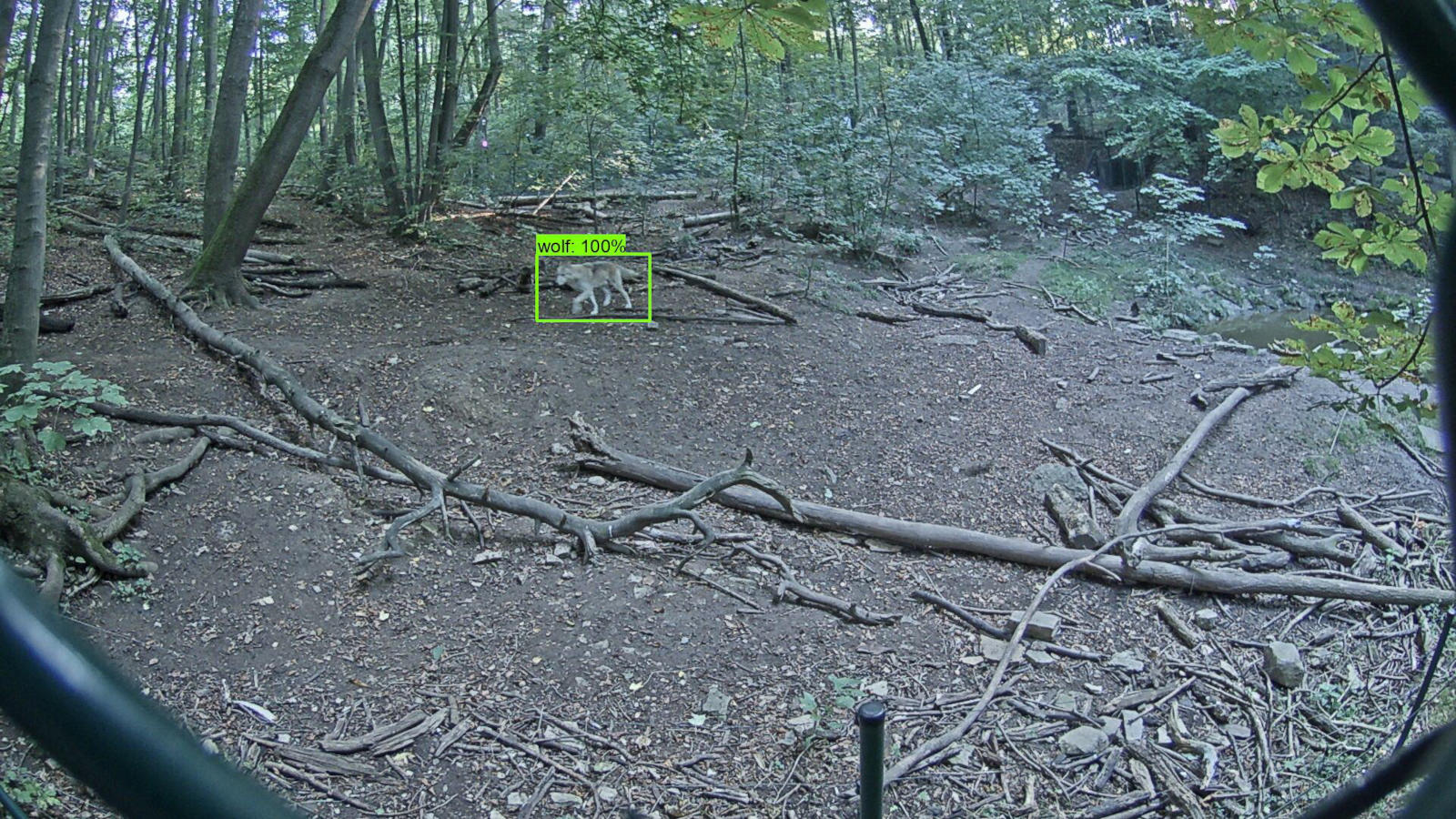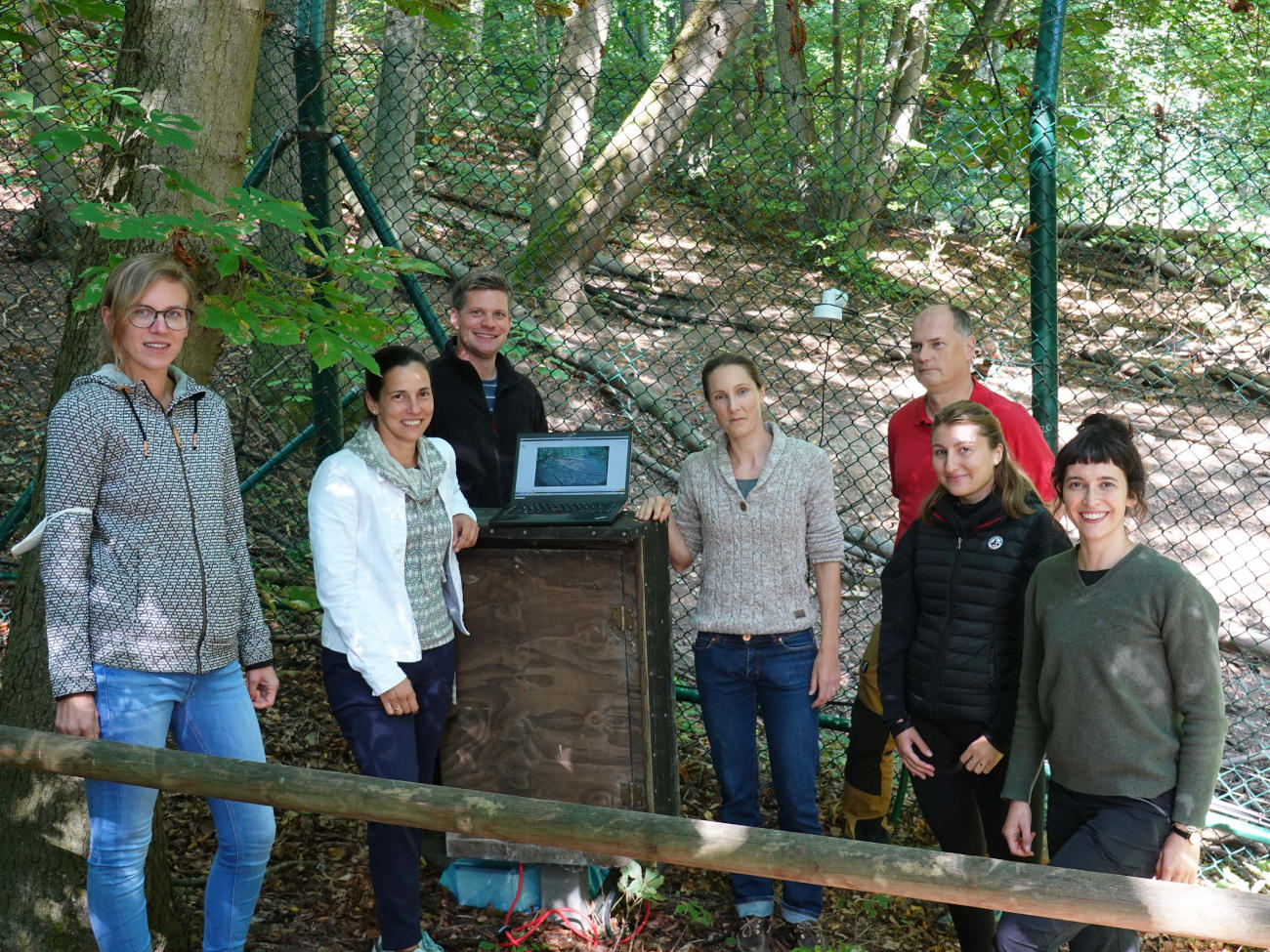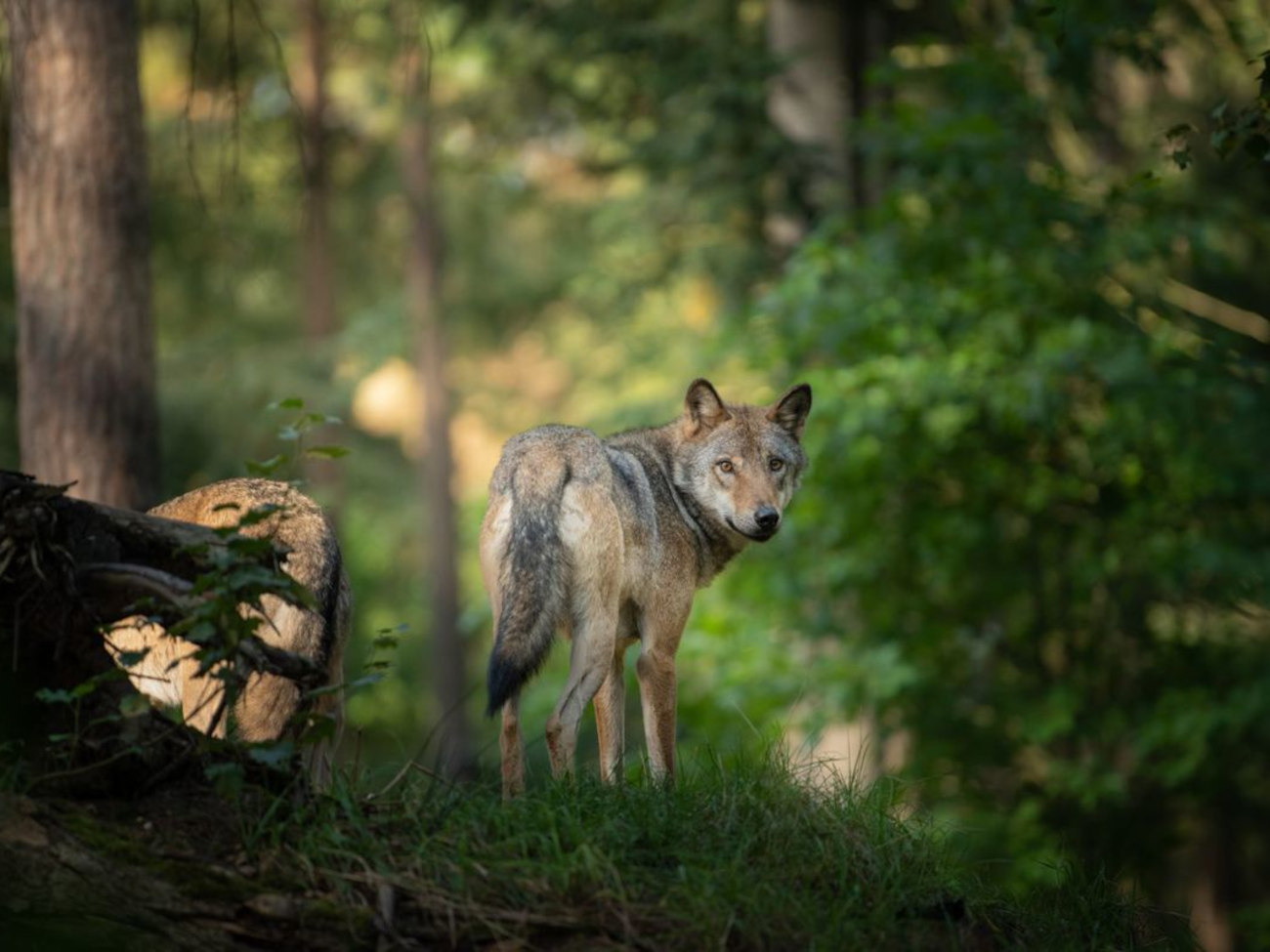
© Projekt mAInZaun
The "Intelligent Fence" Against the Wolf
Hotly debated: wolf or grazing animal? It’s not possible to have both together without problems – or is it? Researchers at the University of Bremen are working on a solution.
It is one of the most hotly debated social questions: Do we give priority to species protection and protect the wolf, even though it kills grazing animals? Or does one fight the wolf by targeted shooting in order to protect the grazing animals? The “golden mean” has not been found – yet. At the Center for Computing Technologies (TZI) at the University of Bremen, research is being conducted on a solution: the “intelligent fence” against wolves.
David Wewetzer from TZI is a horse enthusiast and therefore spends a great deal of time outdoors himself. He knows the problem and the discussion about the coexistence of wolves and grazing animals very well: “The positions in the dispute have become entrenched, there is only black and white, everyone wants to be right – animal owners on the one hand, species conservationists on the other.” In Lower Saxony, the first wolves are now being shot, although it rare that the right wolf – the one responsible for an attack – is hit. “Besides, that doesn’t solve the problem,” he says, “vacated territories are soon reoccupied.”
Supposed “wolf-proof fences” don’t deliver what they promise either, to the chagrin of users. So they have to be improved – and Wewetzer, as a computer scientist and head of the TZI headquarters, knows about the technological possibilities that exist today. He found a program from the German Federal Ministry of Food and Agriculture (BMEL) that focuses on artificial intelligence (AI) in agriculture and nutrition and he immediately knew who to approach for it: Professor Anna Förster, head of the Sustainable Communication Networks working group at TZI.
1.1 million Euros from the Federal Ministry
Anna Förster and her team have been working on self-learning sensor networks for many years, preferably “out there,” sustainably, and for the benefit of society. “It took David 45 seconds to convince me to get involved,” she recalls. Her rigorously peer-reviewed project outline met with approval. She is now researching an innovative fencing solution through 2024 with the mAInZaun project - the acronym stands for “modular, autonomous, and intelligent pasture (protection) fence with detection and deterrence of wolves” - or “modularer, autonomer und intelligenter Weide(schutz)zaun mit Erkennung und Vergrämung von Wölfen” in German. In addition to TZI, the Institute for Animal Breeding and Domestic Animal Genetics at the Justus Liebig University in Giessen and the fence manufacturer RoFlexs GmbH from Salzwedel, which contributes its experience in metalworking, electrical engineering, and small-scale production, are also involved in the project, which is being funded with 1.1 million euros.
“The company is active in wolf parks such as the Wolf and Bear Park in Worbis (Thüringen): “We can’t just stand in the forest with our experimental setups and wait for a wolf to pass by,” laughs David Wewetzer. The parks therefore offer ideal conditions for testing how to keep wolves away from a fence – after all, they shouldn’t be able to get over them in reality. Ideally, the “fence of the future” will also warn of other unauthorized intruders in a pasture, or be able to detect holes in the fence and report them.

© Projekt mAInZaun
The partners want to achieve this goal with sensors and artificial intelligence (AI) methods. The fence is to detect the approach of a wolf and carry out the appropriate measures to defend itself – for example, by means of flashing lights, ultrasonic pulses optimized for wolves, or by secreting scent repellents. “With the AI systems, we want to ensure that a wolf is reliably distinguished from a dog, for example,” says PhD student and graduate engineer Jens Dede, who is working on the project together with Anna Förster and two student assistants. The sensors and other components should have their own power supply so that they can be operated independently of an existing fence. And, of course, they should ideally also send messages to the people who use them – users, but also the police, road maintenance departments, or railroad supervisors.
System Builds on Existing Technologies
“The system we are working on now builds on existing technologies but we still need to adapt it so that it can be practically implemented,” explains Anna Förster. She has already gained experience with such technological solutions in a number of scenarios – in fish farming, in Cameroon in the fight against forest destruction, in Thailand in counting mosquito populations or in locating buried mine workers. “It’s always a matter of recording and evaluating certain parameters in the wild with technological support, so that we can then react in a certain way.” Expertise that is now being applied to the mAInZaun project.
“One of our goals, for example, is for artificial intelligence to learn not only how to distinguish between wolves and other animal species, but even to distinguish between individual wolves.” Anna Förster
The sensor technology and the deterrence solutions should be cost-effective, digitally controllable, and, above all, energy-efficient because the wolf fence must manage without external energy sources. At the same time, these solutions must also provide very accurate results. “One of our goals, for example, is for artificial intelligence to learn not only how to distinguish between wolves and other animal species, but even to distinguish between individual wolves. We would like to individualize the deterrence solutions so that individual animals do not become accustomed to certain defense methods,” says Anna Förster. Wolves are considered very intelligent and adaptable. Animal behavior research at Justus Liebig University Giessen is making an important contribution with regard to such matters.

© Dennis / Adobe Stock
The expertise of fence manufacturer RoFlexs GmbH also plays a major role – after all, the research from Bremen and Giessen should one day result in a functioning, marketable product. This doesn’t necessarily have to come from RoFlexs, Anna Förster emphasizes: “The company is involved as a project partner because it has a lot of experience in metalworking and electrical engineering for fences. For example, it is taking care of the development of robust and weather-resistant housing for the control and sensor technology and the flexible and self-sufficient power supply for the modules.”
But in general, says the Bremen professor, mAInZaun is about the scientific fundamentals and the development of an applicable prototype. The results will be openly published and available to the general public. The University of Bremen will still get something out of it: “With the help of our transfer office, we have already applied for a patent for the solution we designed,” says David Wewetzer. So if the idea from TZI should one day be realized in the form of a product – in other words: a functioning wolf fence – the university could collect license fees.
Bombarded with Media Inquiries
The immense interest of the media in the research project shows how much the public hopes for a solution to the fundamental problem. Wewetzer and Förster have been “overrun” by media inquiries on this topic. “And we are repeatedly asked to give talks, for example soon at the Bremen Chamber of Agriculture. You can see quite clearly that people want to finally have an answer to this fundamental question.”